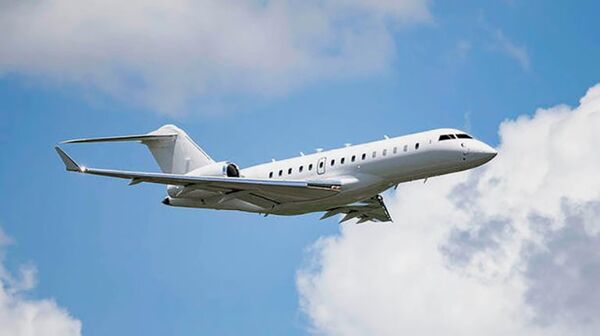- About
- Intara
- Capabilities
- Advisory
- Resources
- News
- Store
01 September 2021
US Army ARES ISR aircraft makes maiden flight
by Gareth Jennings
The US Army's Airborne Reconnaissance and Electronic Warfare System (ARES) aircraft made its maiden flight in late August, prime contractor L3Harris announced.

The ARES is based on the Global 6000/6500 business jet airframe, affording it the capability to fly higher, faster, and farther while carrying a heavier payload. (L3Harris)
The Bombardier Global 6000/6500 business jet-based intelligence, surveillance, and reconnaissance (ISR) aircraft made its first flight from L3Harris Technologies' Waco facility in Texas on 27 August.
As noted by L3Harris, ARES is a technology demonstrator for the US Army's High Accuracy Detection and Exploitation System (HADES) programme that is capable of integrating capabilities from the army's existing ISR fleet with capacity to add payloads, sensors and increase standoff ranges.
According to the prime contractor, ARES can fly at mission altitudes above 40,000 ft for as long as 14 hours, and can activate Long Range Precision Fires (LRPF) to counter long-range threats. “Flight operations above 40,000 ft enhance aircraft survivability and line-of-sight, making ARES and HADES key sensor to shooter (S2S) network enablers, the [US] Army's top modernisation priority. ARES' extended mission range also reduces mission risk by eliminating the need to operate near challenged or denied borders, something not possible with lower-altitude, shorter-range sensing systems”.
HADES is understood to be fitted aboard the Bombardier Challenger 650-based Airborne Reconnaissance and Targeting Multi-Mission Intelligence System (ARTEMIS) aircraft that Janes first disclosed in January 2019. This platform was reported to have flown its first operational missions over the Black Sea region in 2020.
Being based on the larger and more capable Global 6000/6500, the ARES can host up to about 6,500 kg of mission payload, enabling it to carry US Army's longest-range sensors, while provisioning it with the size, weight, and power capacity to accommodate future growth.
Already a Janes subscriber? Read the full article via the
Client Login
Interested in subscribing, see What we do
The US Army's Airborne Reconnaissance and Electronic Warfare System (ARES) aircraft made its maiden ...
Associated services
 Details
Details 